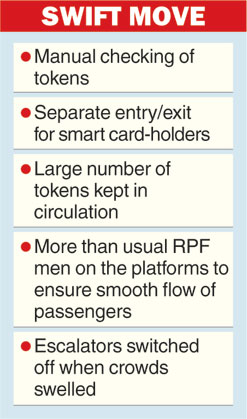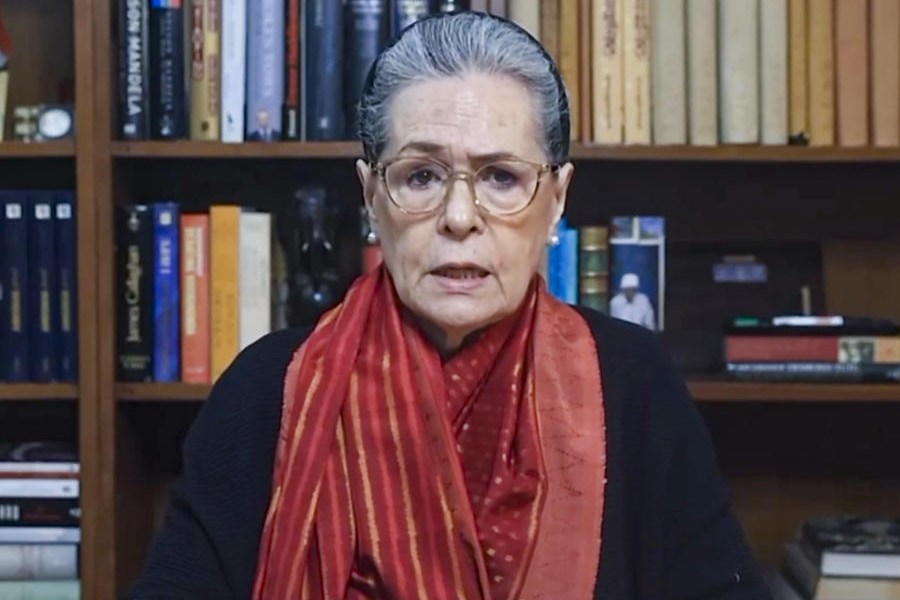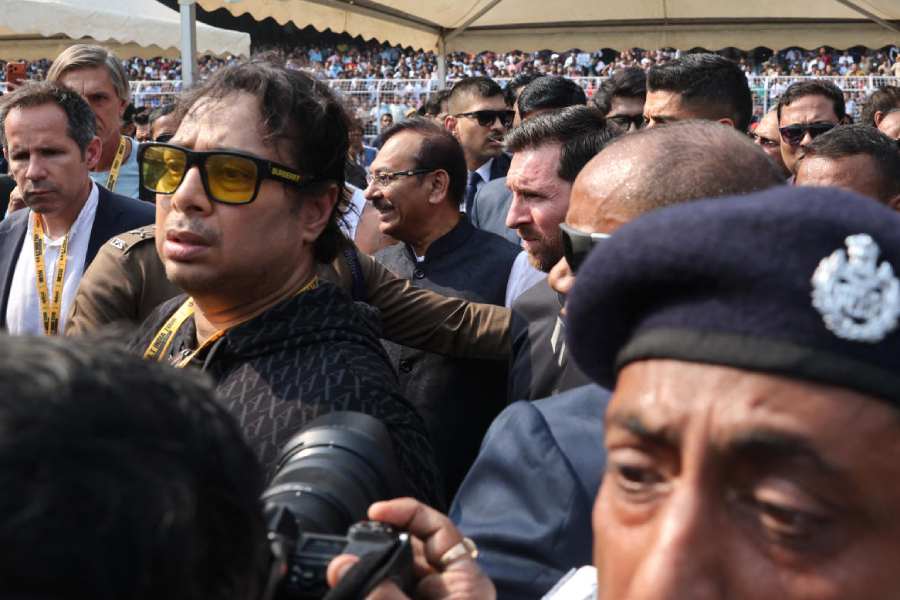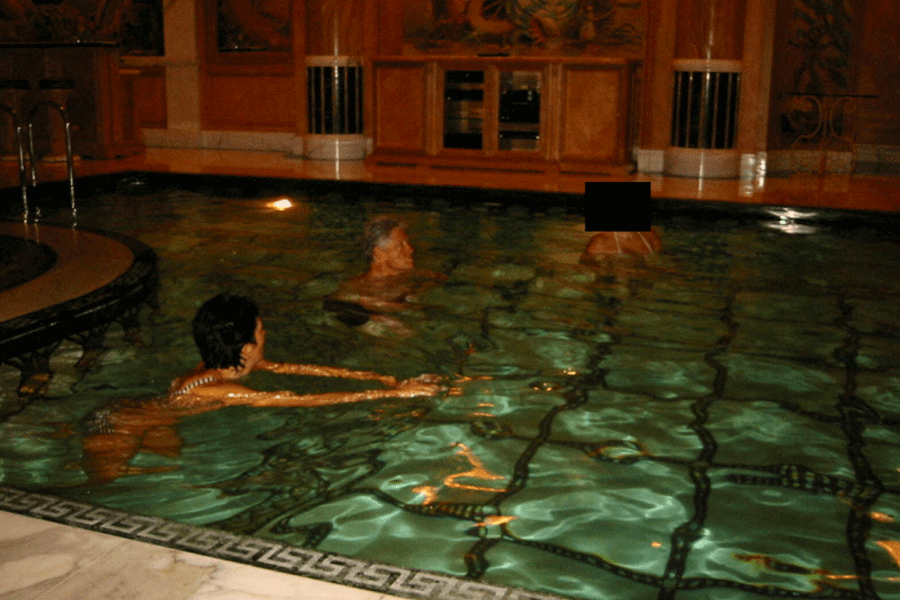June 18: It is not the protector of gaumata alone; it extends its safety net to cover aquarium fish as well.
In a fit of kindness towards our finned friends, the Centre is about to impose such stringent rules on the trade of breeding and selling ornamental fish that grassroots "fish farmers" and traders all over the country will soon go hungry to bed.
Bengal is responsible for about 80 per cent of India's production of ornamental fish, and many people entirely dependent on it for their daily meals have neither the means nor the technical expertise to follow these "lopsided" rules.
The livelihood of about 200,000 people - mostly self-employed and with little capital to speak of - is threatened following the May 27 notification of the ministry of environment, forest and climate change in the Gazette of India: Extraordinary, which will enable the Centre to impose these "impossible" rules.
The rules have been tentatively titled the Prevention of Cruelty to Animals (Aquarium and Fish Tank Animals Shop) Rules, 2017, and they were published by the Centre in exercise of the powers conferred by sub-sections (1) and (2) of Section 38 of the Prevention of Cruelty to Animals Act, 1960 (59 of 1960).
Ironically, most government institutes and the state fisheries department and other stakeholders are in the dark about the online notification. Not even Benfish, a government organisation that runs a project for ornamental fish breeding, has no knowledge of the order.
The Marine Product Development Authority of India, which functions under the commerce ministry, has been paying subsidy to ornamental fish farmers for many years. It isn't aware of the notification, too.
Deepak Nopany, a leading Calcutta-based exporter of ornamental fish, says: "The ramifications are huge. We collect fish from far-flung places. These rules are not feasible. The bulk of people involved are young. It will be a catastrophe. I am entirely dependent on these suppliers."
The notification came like a bolt from the blue. The ornamental fish trade is part of the unorganised sector, but soon after they discovered it online, the breeders and sellers hurriedly formed the West Bengal Ornamental Fish Association (WBOFA), which is yet to be registered.
Spearheading the movement against this notification is Indranil Banerjee, who is acting as a spokesperson for WBOFA. "The rules seem to have been formulated by somebody who is totally out of touch," Banerjee says.
He explained why the rules will be impossible for them to follow, and not for financial reasons alone.
Rule: No aquarium shall function without a certificate of registration from the State Animal Welfare Board.
The registration shall be subject to the following conditions
• It shall be for a period not more than two years
• The fee for application for registration under rule 5 will be Rs 5,000, to be paid through demand draft or postal order in favour of the "State Animal Welfare Board" of the state concerned.
WBOFAspeak: How many traders and breeders will be able to afford such a certificate? And we have failed to trace the animal welfare board.
Rule: Veterinary and infrastructure facilities - Every aquarium shall (a) have a fisheries veterinarian or a fisheries expert employed full time for the purpose of overseeing the health care of all the fish tank animals in its collection; (b) have appropriate facilities for a treatment room.
WBOFAspeak: How is it possible for someone who earns a a meagre living breeding ornamental fish to hire a veterinarian or a fisheries expert employed "full time".
Rule: No aquarium shall be allowed in temporary stalls in fairs or markets or exhibitions in which permanent facilities are lacking.
WBOFAspeak: What about the Galiff Street market where 500-700 stalls sell such fish every Sunday? These small-time traders belong to a registered body, the Baghbazar Sakher Haat Byabasayee Samity.
Rule: Every aquarium shall take adequate care to locate and design all pucca buildings, including the visitor facilities, in such a manner that the fish tank animal display area is not masked and the cleanliness and the hygiene of the aquarium is not affected.
Fish tanks or aquariums are not placed in the following locations, namely: (i) in direct sunlight or near radiators; (ii) in a place where there is always light, or where it is always dark; (iii) in a place where rainwater can enter the tank.
The master plan referred to in sub-rules (1) and (2) shall inter alia include all-round development of the aquarium for a period of 10 years and which shall be revised every five years along with detailed layout plan prepared on the basis of the theme adopted by the aquarium indicating fish tank animal display area, visitor facilities, support infrastructure for fish tank animal upkeep and health care, buildings for administration and maintenance unit.
WBOFAspeak: Won't these rules shut down thousands of makeshift shops and hatcheries? Some fish cannot breed without sunlight. Without rainwater, some others cannot get "eggbound". Without sunlight the pigmentation of goldfish and other species like barb and tetra will not become richer.
Rule: Every aquarium, as a safe-guard against access to unregulated visitors and fish tank animals being subject to provocation and pilferage, shall design appropriate barrier along the fish tanks and shall have on display appropriate signage discouraging visitors from approaching the fish tanks at close proximity or from tapping or touching the fish tank
WBOFAspeak: How can this rule be implemented when most shops hardly have any space to speak of? The question of a barrier does not arise when there is hardly any shop space.
Rule: Maintenance of records and inventory - (1) Every aquarium shall maintain a record of the acquisitions, deaths and disposals of each species of fish in its collection in the manner and in the format determined by the State Animal Welfare Board.
WBOFAspeak: Is it possible for traders without any infrastructure whatsoever to maintain such elaborate records? And even if they do so, how can these be presented to the board, about whose existence no one is aware of.
Rule: No aquarium or fish shop shall display or sell - (a) bowls for keeping fish tank animals; or (b) fish tanks with a capacity of less than 13 gallons or 60 litres of water for keeping fish tank animals.
WBOFAspeak: The minimum size of an aquarium has been fixed at 60 litres. But the most popular ones hold only 50 litres of water. Fish bowls that hold 10-12 litres have been banned. But small fish like fighter thrive and even breed in bowls. And most children love this.
Rule: Every aquarium and fish shop shall ensure that the quality of the water in the fish tanks is maintained at all times and is within the permitted range of salinity, pH, hardness and temperature specified so as to meet the health and welfare needs of the fish tank animals.
WBOFAspeak: This is absolutely not necessary in the case of freshwater fish. Siphoning is good enough for maintaining balance.
Rules: It is prohibited to keep or sell the following species, namely... (a list of the species and group banned, along with their common and scientific names, follow)
WBOFAspeak: Ninety-five per cent of popular marine fish are banned. Some examples: 46 varieties of Butterfly fish; 16 types of Angel fish; three types of File and Trigger fish; four types of Damsel fish; four types of Clown fish; two types of Bat fish; five types of eels (eels are being exported to foreign countries as edible fish); eight types of Wrasses, Blennies, Dragonettes, Gobies and Parrot fish; four types of Anthias, Groupers and Grunts; six types of Tang; nine types of Lionfish, Stone fish and Pipe fish; four types of Box fish, Razor fish and Mantis shrimp; all octopus species (octopus is also an edible item) and jelly fish.
WBOFAspeak: We have nothing against the ban on Cetaceans (a whale, dolphin or porpoise), penguins, otters and manatees. These are banned items according to the Wildlife Protection Act, 1972. But why ban the sale of most marine fish?
Repeated attempts last week by Metro to contact Ravi S. Prasad, joint secretary, ministry of environment, forest and climate change, who has signed the notification, and others in the ministry in Delhi elicited no response.
WBOFA members met at Santragachhi on June 5 to start a movement against the notification. Jayanta Mandal, 46, who is among the more prosperous of breeders, says what started as a hobby became a profession.
A group of young men work under Mandal. They have their own tiny hatcheries in their houses as well. "We leave around 3am to collect daphnia and plankton to feed fish. It is a strenuous job and we have to keep an eye on the tanks 24x7," says Mandal, who has won several awards. "We never got any training. We learnt on the job."
Sourav Ghoshal, a young importer, says the rules are not "commercially viable".
Debasish Ghosh, a small trader, sums it up: "There is no question of cruelty. We treat the fish like babies. Unless we keep them healthy and alive they won't sell."
The clinching argument against the notification comes from Sunirmal Das, secretary, WBOFA: "If the government is so concerned about cruelty to fish why does it not ban the manner in which live table fish is often battered to death before cleaning?












